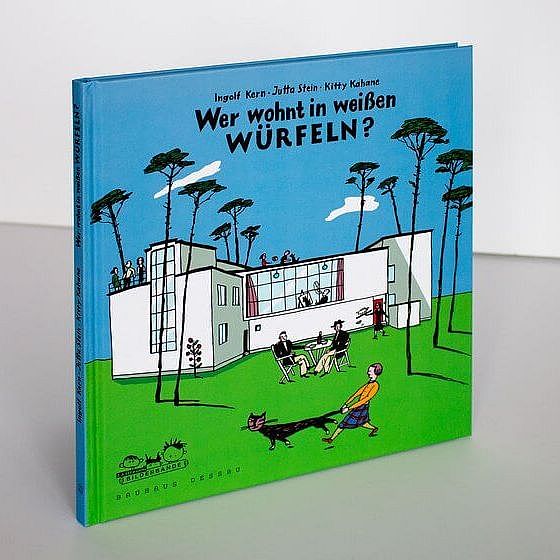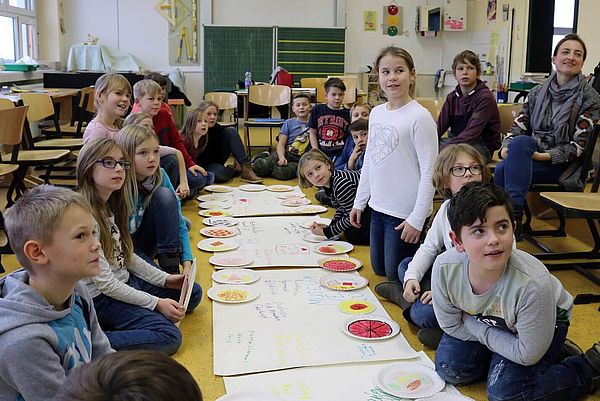Who lives in white Cubes?
The masters' houses in Dessau
How did the Bauhaus masters live in their houses? How did they celebrate? Inspired by the children's book "Wer wohnt in weißen Würfeln(Who lives in white cubes)", published by the Bauhaus Dessau Foundation, children are able to immerse themselves in the Bauhaus cosmos. During a journey back in time to 1927, they relate historical events to their own everyday lives and so find an approach to history that is both sensual and can be experienced at close quarters.

Grundschule am Luisium
Frau Kus / Teacher responsible for the project
______________________________
November 2016
Anne Schneider / Bauhaus Agent
On a literary Voyage of Discovery
Based on the book "Wer wohnt in weißen Würfeln?", which is suitable for children aged 8 and over, children playfully explored the Dessau masters' houses and the lives of their inhabitants. In the workshop, reading was followed by occupation with individual elements or episodes from the book. This created a sensual approach and hands-on experience. Who were the Bauhaus masters and how did they live almost 100 years ago? What did the individual houses of Paul Klee and Vassily Kandinsky look like? How were the parties back then? Why did the adults dress up for their celebrations, and what is a samovar, actually?
Bauhaus Hands-On
The chapter about a costume party at Kandinsky's house created a basis for getting to know how people lived, worked, and celebrated at the historic Bauhaus. The workshop's focus was on communicating experiences of communal living and eating. The pupils were able to serve the food discovered in the book, and set the table together to include depictions of their own favourite foods. This communal design of a festive table invited dialogue about eating habits in the children's own families, making it possible to discover classmates' unfamiliar favourite dishes as well as get to know 1920s cultural customs and traditions at the Bauhaus.

Headline
The workshop is suitable for a thematic introduction to the Bauhaus within the primary school context and offers potential for use in subjects such as design/art, German, or general knowledge teaching, with the inclusion of the children's book "Wer wohnt in weißen Würfeln". The tested methods and approaches will be developed for inclusion in an advanced teacher training course for primary school teachers by LISA in spring 2018, and tested further for the development of didactic materials introducing pupils to the Bauhaus.
(AS 2017)
Grundschule Ziebigk
Stephanie Bohm / Teacher responsible for the project
___________________________
January 2017
Silke Wallstein / Bauhaus Agent
Movement Workshop in the Masters' Houses
On the path to one of the masters' houses, in this workshopobjects were found that the inhabitants had left behind/forgotten, including a letter describing the life of the Bauhaus members in the masters' houses. The basis was once again the children's book: "Wer wohnt in weißen Würfeln?" Various elements of the book were used to make the masters' houses into a sensory experience. The motif of time travel triggered a playful impulse, and the starting point was being taken back to the 1920s with a magic spell cast by Schlummermutter Frau Schlau. In the studio of Klee's house, the children were transformed into artists, colours and pictorial characters. The pupils were enthusiastic about the idea of making details from life at the Bauhaus sensually perceptible through the design of movement.
The workshop provides a low-threshold introduction to the topic of the masters' houses and their inhabitants and, if required, will be suitable as a regular format for primary school pupils.
(SW 2017)